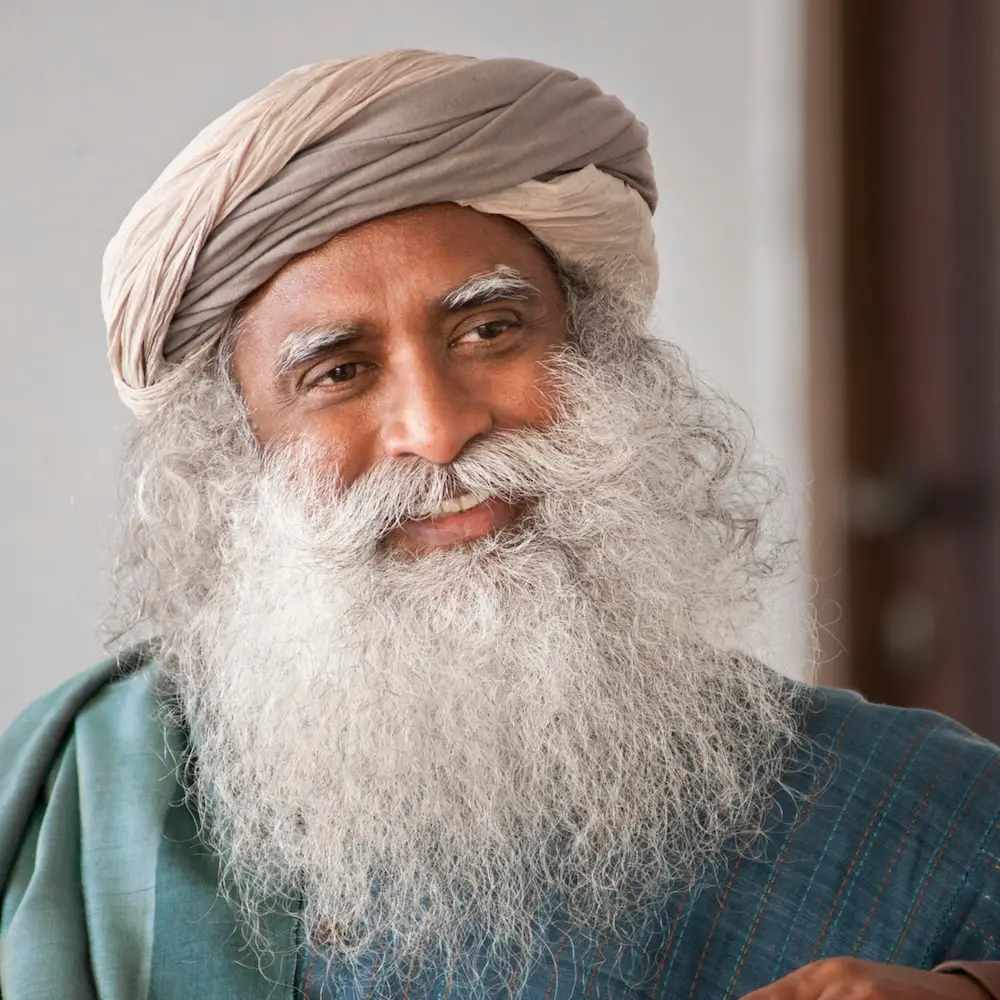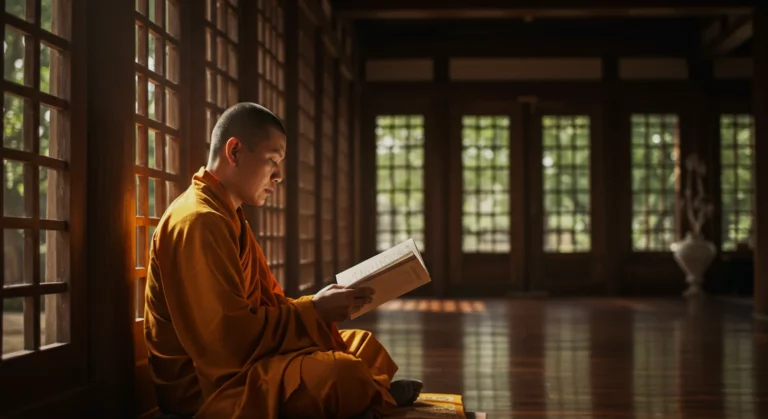Hand gestures are part of our communication, and some of them speak louder than words. By accident or not, some of the most commonly used ones in Western cultures resemble ancient Eastern hand gestures, known as mudras.
These are the energetic “seals” you can use to benefit your mind, body, and spirit. And some of them are thought to be essential tools for reaching enlightenment.
The great thing is, mudras are no longer privy to yogis and gurus alone. This powerful tool can be easily learned by anyone who aspires to unlock their fullest potential and master their lives.
What are the mudras?
The word “mudra” stands for “seal.” So mudras are used in the Buddhist and Hindu practices of yoga to create an “energetic seal” within the body.
For example, in Hatha yoga, it’s a tool for connecting two points of energy in the body. Also, it’s a way of channeling energy from the root chakra to the crown chakra to achieve higher states of consciousness.
Sadhguru, a venerated yogi and trainer of Mindvalley’s A Yogi’s Guide to Joy program, defines them as “a subtle science of arranging your body in a certain way.” He explains that your system’s functions can be altered just by changing the positions of your palms.
This is a whole science by itself, which essentially involves the geometry and circuitry of the body.
Benefits of practicing mudras
So, what are mudras used for? Mudras are utilized to awaken the divine spiritual power and balance energy within the body.
As a result, you reap a plethora of benefits for your physical and mental health and well-being, including:
- Improved physical health,
- Reduced stress and anxiety,
- Increased focus and concentration,
- Enhanced spiritual awareness,
- Improved sleep, and
- Pain relief.
When combined with breathing exercises, it can improve immunity and minimize respiratory issues.
How do hand mudras work?
According to Ayurvedic medicine, our hands hold the endpoints of energetic pathways carrying prana (life force energy) through our bodies. These energy pathways are called meridians (the same meridians used in acupuncture and reflexology).
Our fingers also serve as connection points to the five elements: fire, air, space/ether, earth, and water. Hand mudras manipulate the flow of prana by connecting different meridians with these elements and redirecting the flow of certain energies from the hands back into the body.
Modern medicine has shown that our hands contain hundreds of thousands of nerve endings. These nerves originate in the brain, circulate the body (along with blood vessels), and end as highly sensitive and receptive points in the hands and fingertips.
Most importantly, you can measure your subtle energy levels through the electro-photonic imaging (EPI) technique.
Do mudras work?
Yes, they do work, but they do not stand alone. They are just one component of the mind-body experience during meditation.
From a scientific standpoint, practicing mudras for five minutes doesn’t make much difference. However, mudra practiced for a longer time showed a significant change in subtle energy levels and overall physical state.
According to Emily Fletcher, meditation teacher and trainer of Mindvalley’s The M Word program, mudras are a useful tool for amplifying your meditation practice and deepening your connection with the inner self.
What are the mudras in yoga?
They are practiced in yoga to encourage balance, intention, and life energy. So, how many mudras are there?
The list of mudras used in yoga is endless. But the classical yogic texts place an emphasis on only twenty hand gestures out of the thousands depicted.
In Indian culture, for everything, they identified a particular asana, a mudra, and a particular kind of breathing, so that a human being brings out the best in themselves.
— Sadhguru, trainer of Mindvalley’s A Yogi’s Guide to Joy program
Yoga mudras are also used as symbols in statues of the Buddha and of Hindu deities. Typically, statues of Buddhas often depict the hand gestures they held during their moment of enlightenment.
Also, schools in Asia often have statues of Buddha at the entrance of each building holding the Vitarka mudra, the mudra of teaching.
Since the effect of mudras is often subtle and lightly felt, mudras are often practiced in stillness, with breath work (pranayama), and active yoga practices.
What are the types of mudras?
To begin directing the flow of prana in the body, a single mudra should be intentionally held for at least ten minutes. One of the most vital elements of practicing mudras is to do so with intention, presence, and mindfulness.
On top of that, according to Anodea Judith, the world’s leading chakra expert and trainer of Mindvalley’s Chakra Healing program, each mudra corresponds to a specific chakra and can be used to balance and stimulate the energy center.
Here are the ten most commonly practiced mudras:
1. The Gyan mudra: seal of knowledge
The Gyan mudra is used for meditating, integrating wisdom gained while in meditation, and bringing awareness to the breath. This yoga mudra is often paired with deep breathing while focusing on sending the diaphragm as deep as possible into the root chakra with every breath.
The Gyan mudra activates the root chakra by directing the flow of prana toward the legs and base. It also stimulates the element of air in the body.
How to do it:
- Typically, while sitting cross-legged in the lotus position, place the tips of your index finger and thumb together while keeping your other fingers relaxed and straight.
- The direction your palms face varies in different types of yoga—facing your palms upward will help you connect to celestial wisdom, while facing them downward will create a grounding effect.
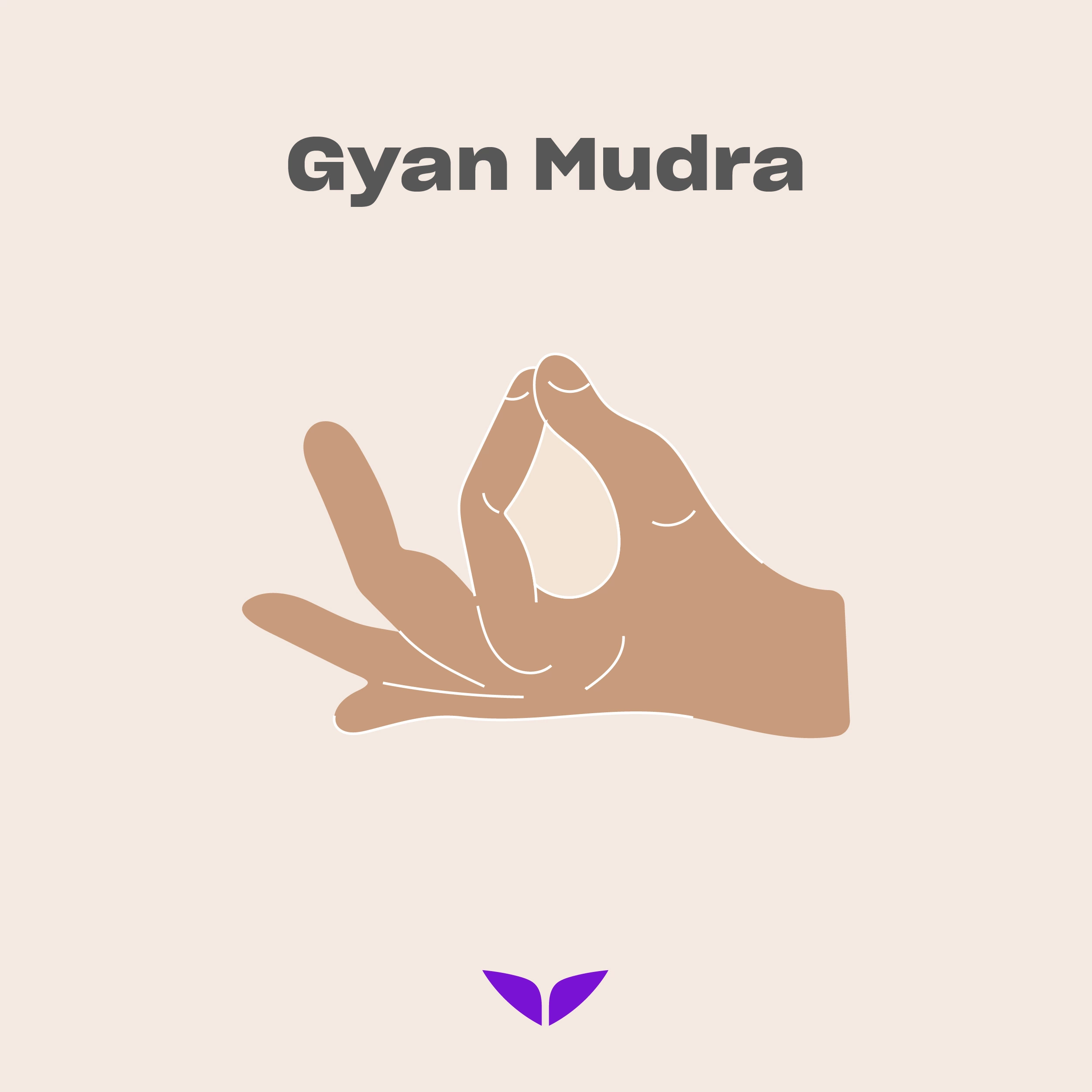
2. The Shuni mudra: seal of patience
This yoga mudra is used to purify emotions and thoughts. By practicing this mudra, you can develop greater discipline and determination.
The Shuni Mudra activates both fire and space, so it’s a great tool to attain mental clarity and increase focus.
How to do it:
- Perform this mudra by touching the middle finger to the thumb while keeping the other three fingers straight and relaxed.
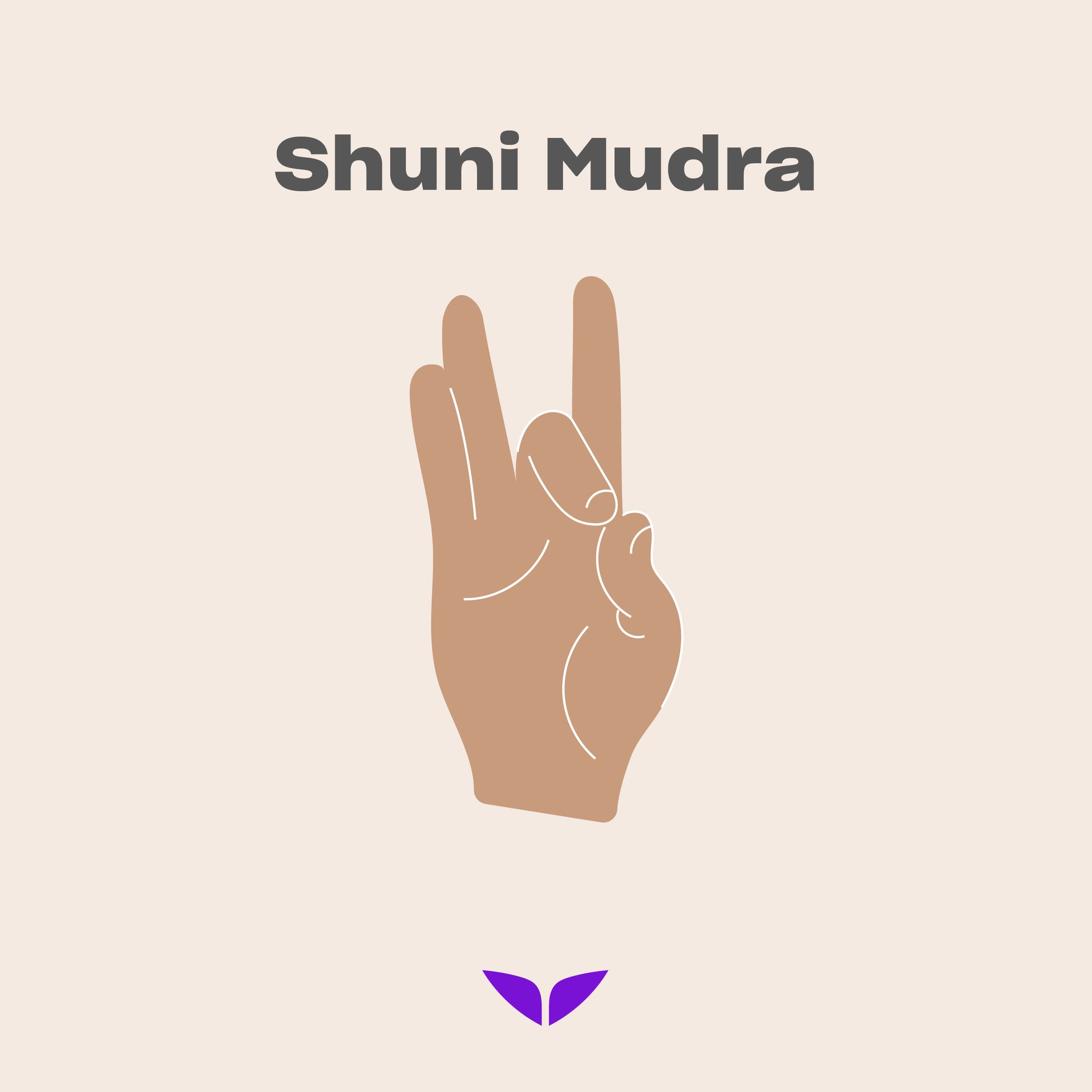
3. The Prithvi mudra: the seal of earth
This yoga mudra brings the earth element back into the body. This connection with Earth strengthens your body and fosters many healing benefits.
It helps fight fatigue, pain, and problems with skin and hair (among numerous other ailments, like paralysis and osteoporosis). It also stimulates the root chakra and brings energy to one’s primal instincts.
How to do it:
- While sitting, ideally in the lotus position, place the tips of your thumb and ring finger together while keeping the other fingers straight and relaxed.
- Keep your palm facing outward, fingers up, and comfortably hold your hand around chest level.
- Hold this mudra for 30 minutes or more to activate its full healing effects.
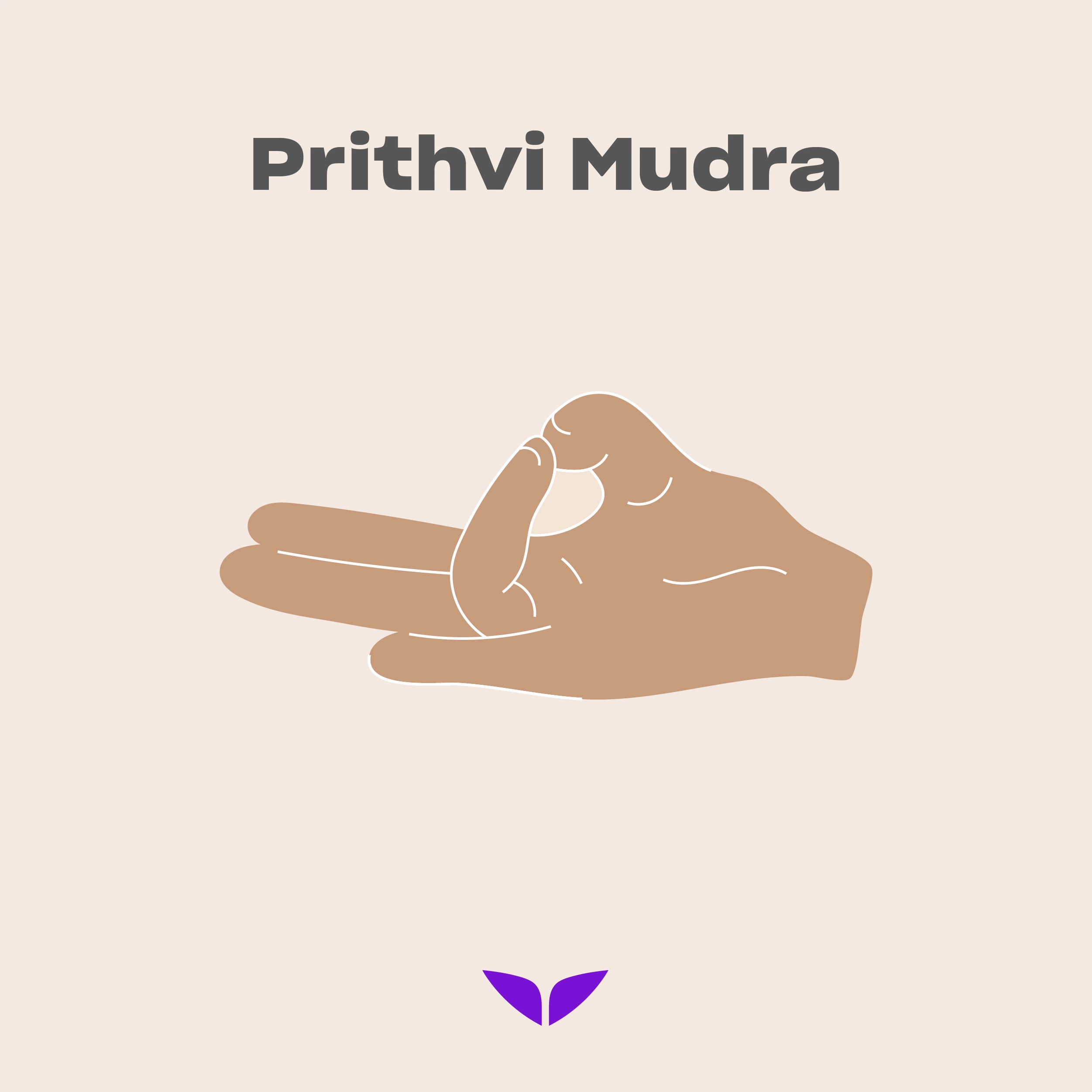
4. The Surya mudra: the seal of fire
This yoga mudra is similar to the Prithvi Mudra in hand position; however, the difference in hand position activates the fire element (thumb) while neutralizing the earth element (ring finger).
It is used to improve digestion and metabolism and can help with weight loss. It can also help fight colds by increasing core body temperature (hence, activating the fire element).
How to do it:
- Bend your ring finger so that your top knuckle touches the pad of your thumb. Keep your other fingers straight and relaxed.
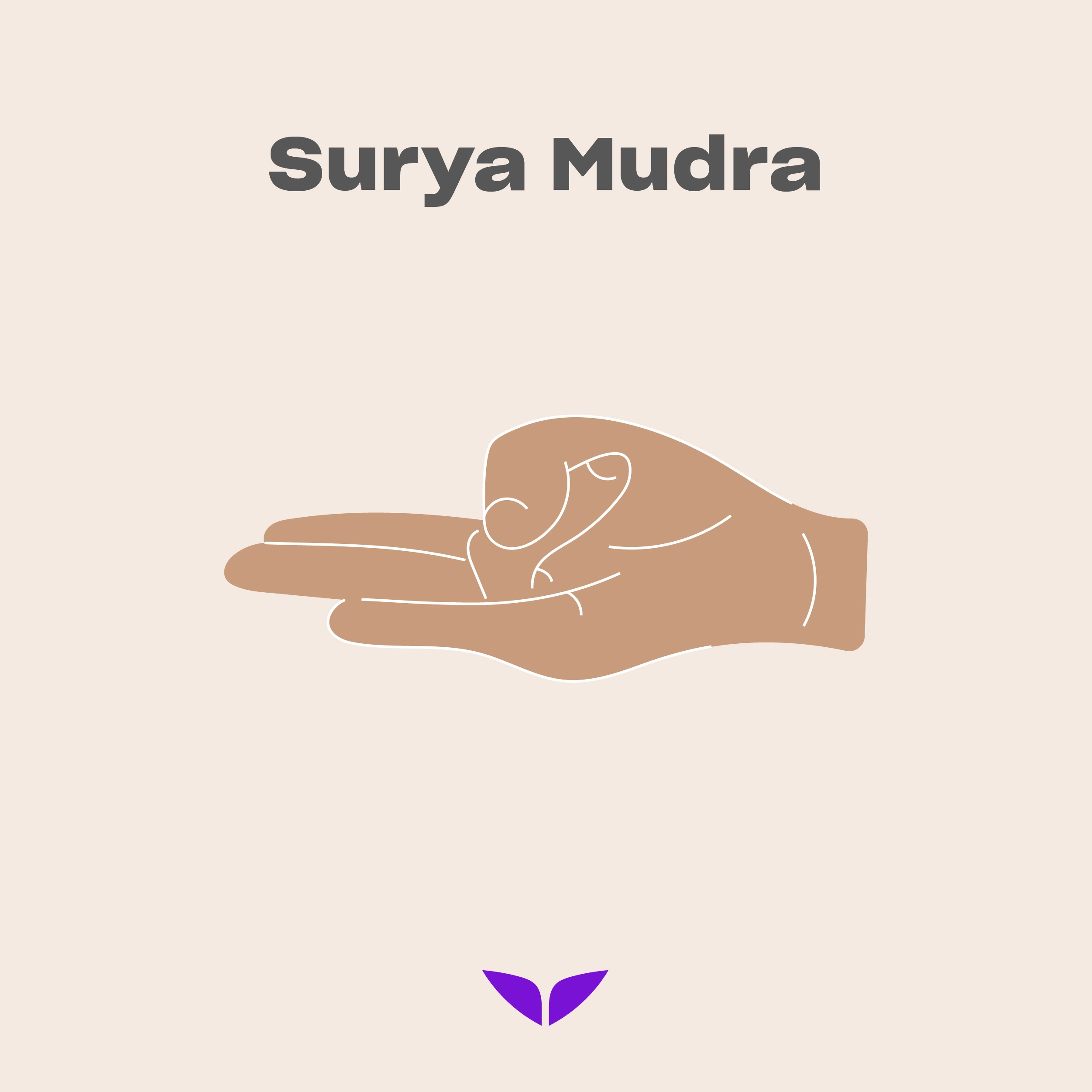
5. The Vayu mudra: the seal of air
The Vayu mudra balances air in the system, bringing it back into its proper flow, so it’s good for gas-related pain, flatulence, joint pain, bloating, and abdominal discomfort.
Because the element air also corresponds to the mental state, it’s used to calm the mind and reduce anxiety and stress-related issues.
How to do it:
- Press the index finger to the base of your thumb, applying slight pressure.
- Combine it with breathing exercises.
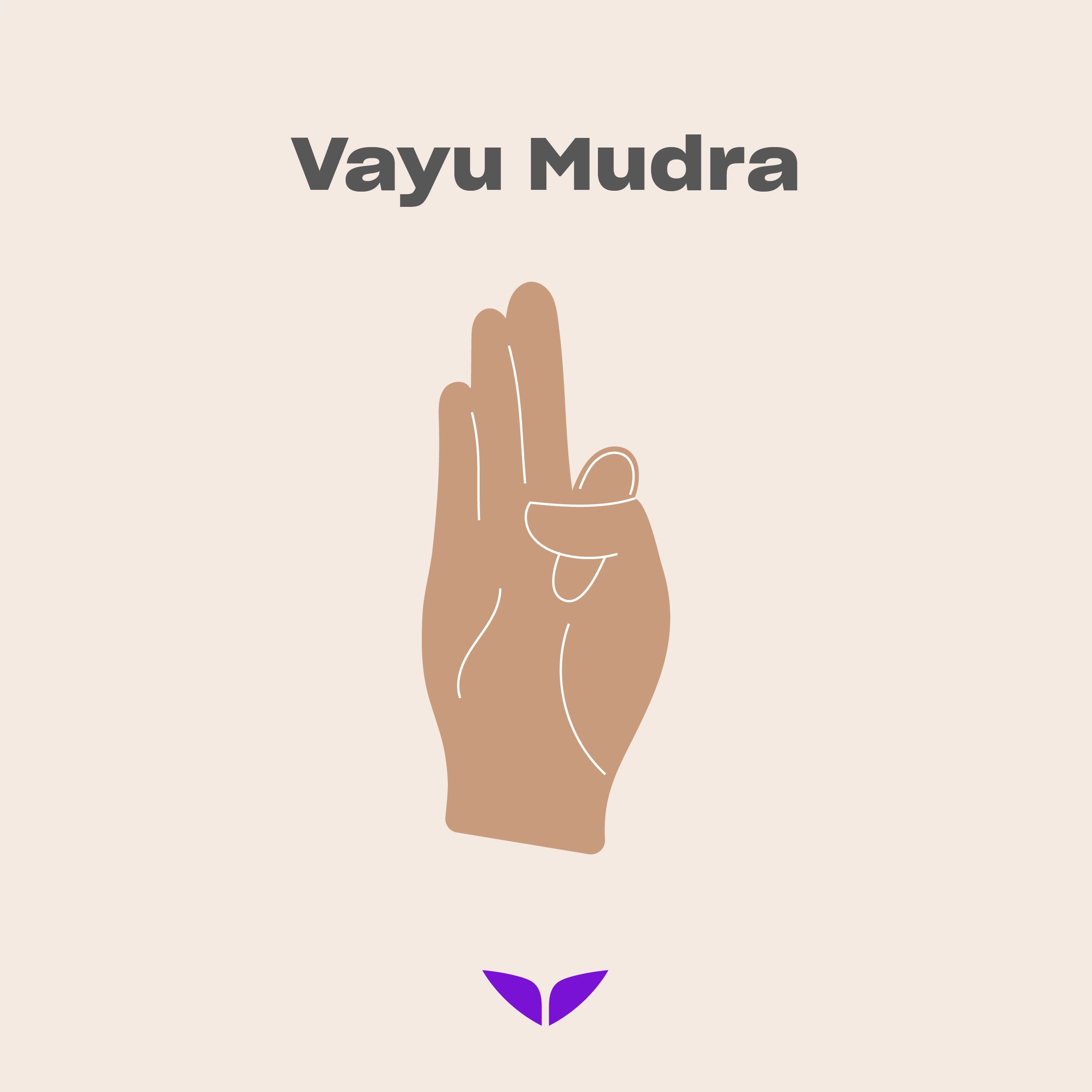
6. The Prana mudra: the seal of life energy
This yoga mudra helps you connect to your life force. It awakens the dormant energy contained within you.
If you need to calm your mind and body and reduce stress, you can practice the Prana mudra to promote relaxation. It is also thought to improve mental focus and ease nervousness and fatigue.
How to do it:
- Connect the tip of your thumb with both the ring and pinky fingers (like making a peace sign). Keep the index and middle fingers extended.
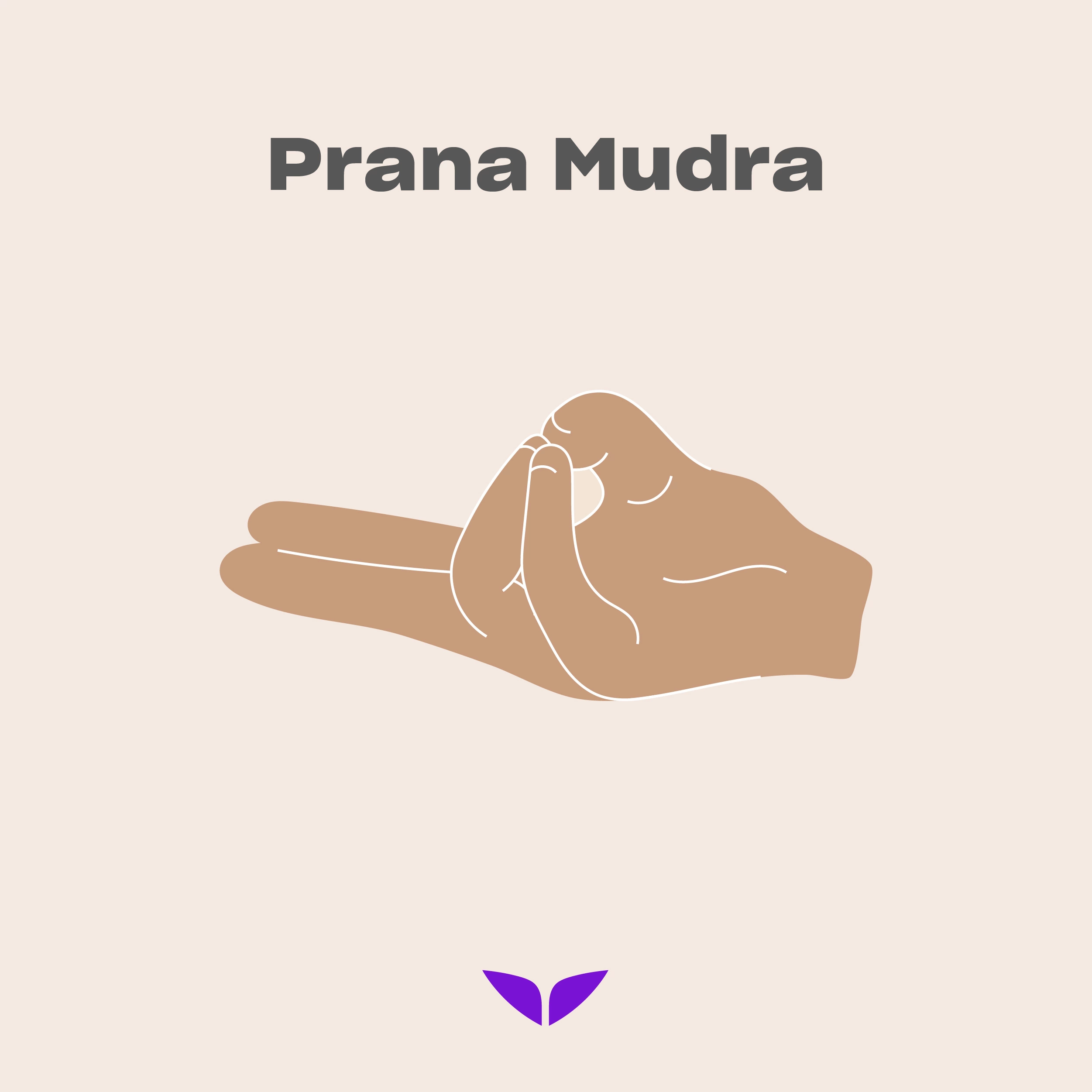
7. The Dhyana mudra: the seal of meditation
The Dhyana mudra is one of the oldest mudras and was used before yogis integrated it into meditation. Found throughout Buddhist and East Asian culture, it’s said that Gautama Buddha reached enlightenment by practicing the “seal of meditation.”
It brings deep contemplation, reflection, and inner peace associated with the meditative mind state. Practicing it will help you improve your ability to focus on meditation.
How to do it:
- Place your right hand over your left hand, with just the fingers overlapping. Keep your palms facing up and resting in your lap, while connecting your thumbs together in a triangular shape.
- This mudra is used in a number of different meditation postures, including seated, standing, and walking meditations.
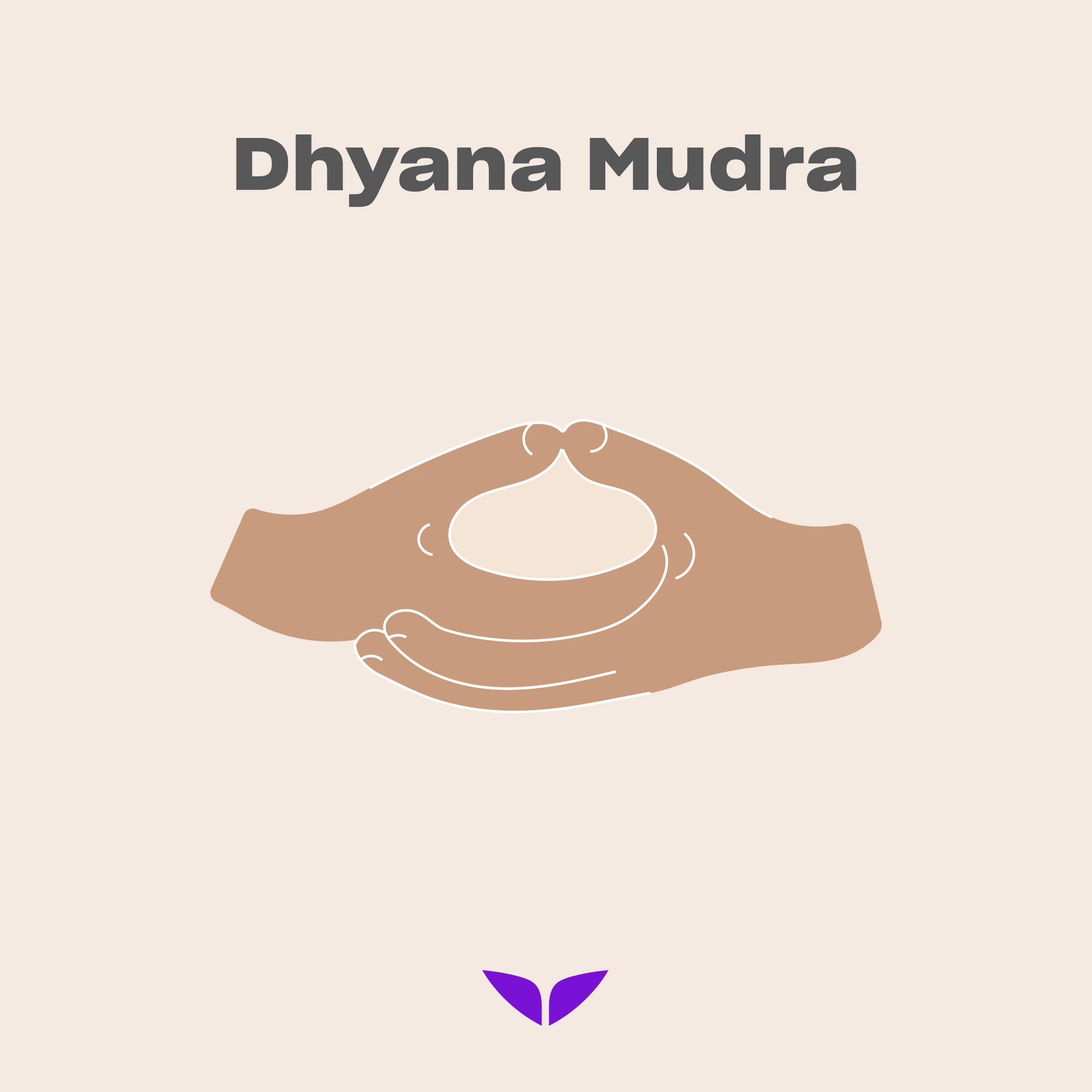
8. The Rudra mudra: the seal of Shiva
Associated with Shiva, it refers to your internal transformative abilities and personal power. This is why this mudra is used to balance the solar plexus chakra.
It also helps improve clarity and concentration of thought, so if you deal with dizziness, brain fog, or exhaustion, this mudra can help you energize your mind and body.
How to do it:
- Connect your thumb to your index and ring fingers while keeping your other two fingers as straight as you can.
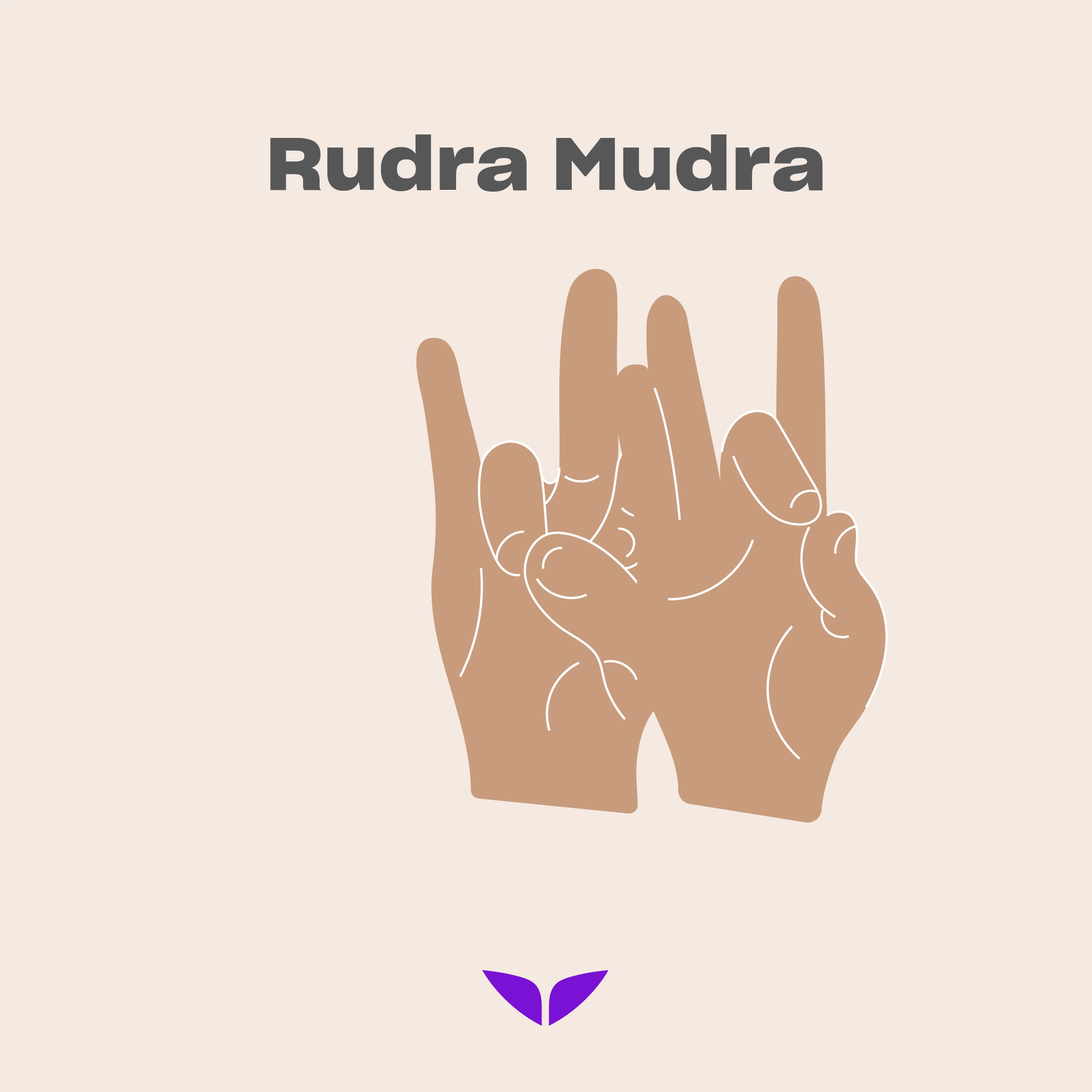
9. The Apana mudra: the seal of purification
It is specifically used to detoxify and purify the body and balance the elements of fire, space, and earth within it.
Not only does it promote waste elimination, but it also boosts physical, emotional, and mental digestion.
How to do it:
- Bring your second and third fingers to your thumb while keeping your index finger and little finger straight and extended.
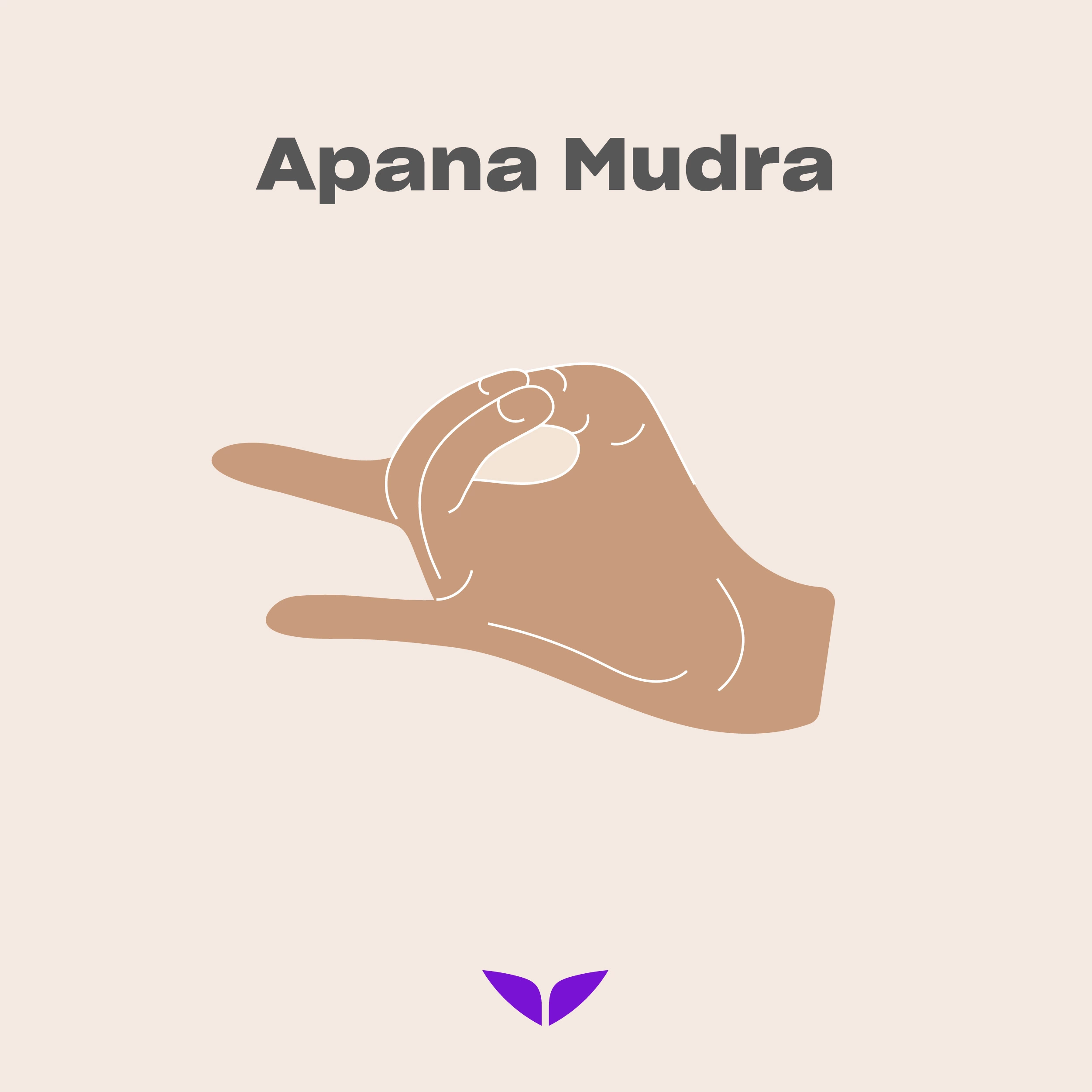
10. The Ganesha mudra: the seal of Ganesha
Named after the first Hindu deity, Ganesha, it’s a remover of obstacles. So it’s great for releasing obstructions and overcoming challenges in your life.
It also corresponds to the heart chakra, bringing your attention and energy into the heart space. So if you aspire to open up your heart and cultivate more compassion, incorporating this mudra into your meditation will help you do just that.
How to do it:
- Place your left hand in front of your chest with your palm facing outward and your left thumb down.
- Place your right hand in front of your left, with your right palm facing toward you and your left palm.
- Lock your fingers together like a claw, holding them with the four fingers of your opposite hand.
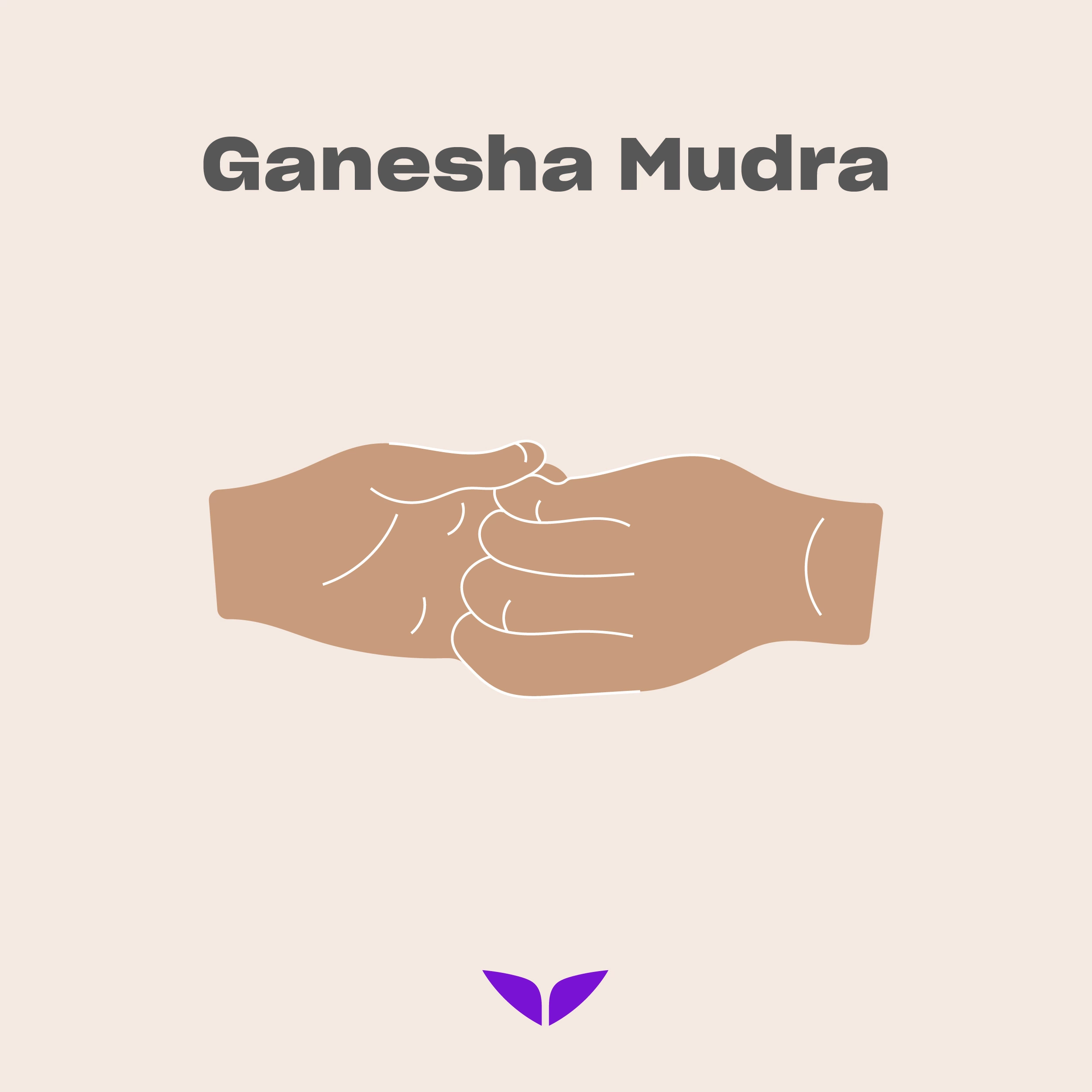
Consciously Create a Life You Love
There’s a difference between a practice and a tool. The latter can’t stand alone but complements the practice.
In the same way, mudras can be a complementary tool to your meditation, chakra healing, and other spiritual practices, making them a much more powerful and beneficial tool for up-leveling all areas of your life.
If you aspire to take your physical, mental, and spiritual well-being to new heights, Mindvalley is the right place to be. Here, you can learn from spiritual teachers like:
- The M Word with Emily Fletcher to help you make meditation a habit;
- A Yogi’s Guide to Joy with Sadhguru to learn how to become fully alive; and
- Chakra Healing with Anodea Judith to become whole.
The great thing is that you can sample classes from this program by unlocking your free access.
Welcome in.



